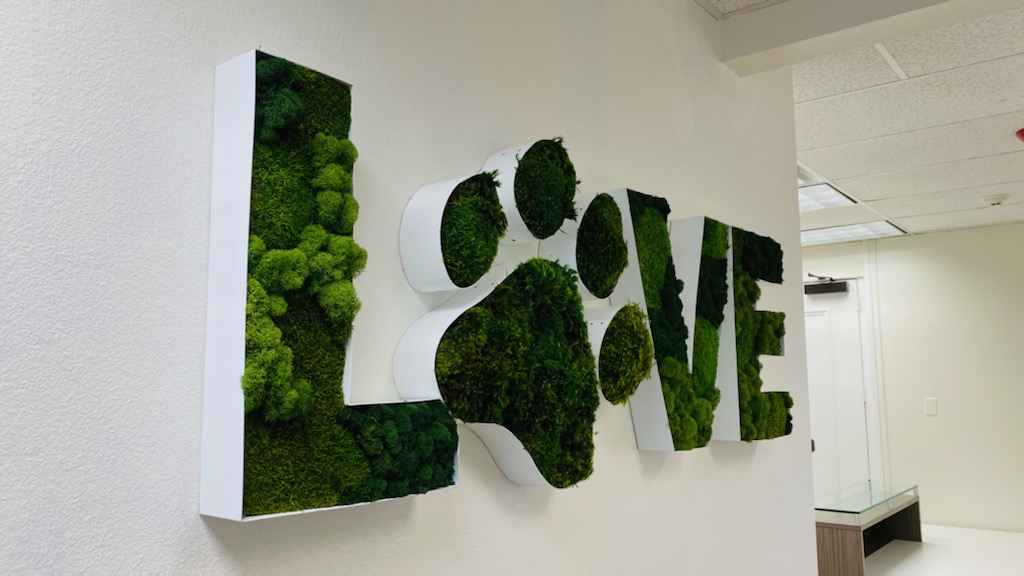September 28, 2011
Because Your Sign Proposal Needs to Be the Best

Your client just showed you the location of her new channel letter sign. It is perpendicular to the roadway, which is good, but it is on a busy street in a commercial district.
How do you determine how large the sign’s letters should be for optimum effectiveness? And how can you use that calculation to make your sign proposal stand out from the others?
You may already know the old rule of thumb for calculating sign letter size: 1” of letter height for every 50’ of reading distance. But that equation assumes a controlled reading environment, like an Optician’s office. Signs are not typically situated in such a stable location. It is usually a busier and more chaotic environment, and often the sign will be read from a moving vehicle.
For determining optimum sign letter size, another factor to keep in mind is the aging of the population. Some people’s vision conditions become more acute with age. That decreased level of vision makes it all the more difficult for them to read a sign. Also, the signage environment has never been more competitive and complex than it is today. That means letters that are too small can kill your customer’s sign effectiveness. This applies to all letter types – not just channel letters.
So a better guideline is 1” of letter height for every 25’ of sign reading distance for maximum impact.* Maximum impact means not only easy readership in a busy signage environment – it also means a person who has read the sign has time to react to it and safely pull their vehicle over and drive into your client’s business location. So how do you figure out the “maximum impact” channel letter size when the sign will be typically be read from a moving vehicle?
Here is the professional way. First, get the following data: * V = Average vehicle speed on the street where the sign will be located (use the speed limit, and change that speed to feet per second using the web site listed below) * N = Number of words/symbols on your client’s sign * DT = Decision time (use 4.2 seconds – see below) * MT = Maneuver time (use 4.0 seconds) Highway literature typically reports that once a sign has been read, drivers need between 4.2 and 7.0 seconds to make a decision to react to a sign, and an additional 4.0 to 4.5 seconds to safely maneuver their vehicle through traffic and stop (as a rule of thumb, use the lower end of both of these estimates.)
This web site has a free MPH to FPS calculation: http://www.calculatorpro.com/miles-per-hour-to-feet-per-second-calculator Here is your formula for the number of seconds necessary to read the sign, react to it and then pull the vehicle over: (N * .33) + DT + MT For example, a 3 word sign would take a total of 9.19 seconds for an average driver to read the sign, make the decision to react to it and then maneuver their vehicle to stop (.99 + 4.0 + 4.2). Here is your optimum reading distance formula: FPS * ((N * .33) + DT + MT) = optimum reading distance for maximum sign impact
And here is an example sign scenario: * 25 MPH speed limit * 3 sign words (3 words * .33 per word = .99 seconds for average reader to read the sign) 25 MPH speed = 36.67 feet per second (FPS) Here is the calculation to find the optimum sign channel letters size: 36.67 * ((3 * .33) + 4.2 + 4.0)) = 336.99 feet optimum reading distance 336.99 feet/25 feet per inch of letter height = 13.48 inches letter size
So in this scenario, your client’s sign channel letters need to be about 13.5 inches tall for maximum impact. Make this calculation a part of your sign sales proposal – you’ll probably be the only one who does. And use it to persuade your client that this is indeed the correct letter size to give his sign maximum impact. He will thank you for that later – and buy more signs from you in the future.
*Charles R. Taylor, Thomas A. Claus and Susan L. Claus, “On-Premise Signs as Storefront Marketing Devices and Systems”, 2005. Pg. 8.2.
